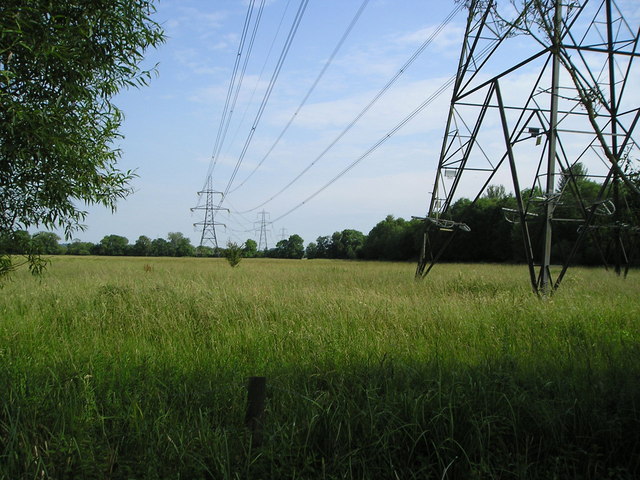A 21st Century Energy Policy, Part 4: The Institutions to Make it Happen
I have written a series of four articles discussing Britain’s energy policy for the left-wing Labour-supporting website Left Futures. In Part 1 I explain the limits of renewable energy sources. Part 2 advocates for the role of nuclear power in an energy transition. Various technologies which should be used and policies which should be enacted in order to improve energy efficiency and electrify heat and transport are discussed in Part 3. Finally, Part 4 proposes an ownership framework capable of building the electricity infrastructure needed.
 As discussed in Part 3, the transition to a low-carbon economy is a
massive task which will require extensive government
intervention. During the most recent leadership campaign, Jeremy
Corbyn promised to “promote the growth of over 200 ‘local energy
companies’” and to “support the development of 1,000 community energy
co-operatives”. Although the exact meaning is unclear, presumably by
“local energy companies” he is referring to council-owned gas and
electricity distributors such as Nottingham’s
Robin Hood Energy. The “community
energy co-operatives” would appear to refer the small generators of
renewable electricity which can be found across Britain. The
Brighton Energy Co-operative
presents an example.
As discussed in Part 3, the transition to a low-carbon economy is a
massive task which will require extensive government
intervention. During the most recent leadership campaign, Jeremy
Corbyn promised to “promote the growth of over 200 ‘local energy
companies’” and to “support the development of 1,000 community energy
co-operatives”. Although the exact meaning is unclear, presumably by
“local energy companies” he is referring to council-owned gas and
electricity distributors such as Nottingham’s
Robin Hood Energy. The “community
energy co-operatives” would appear to refer the small generators of
renewable electricity which can be found across Britain. The
Brighton Energy Co-operative
presents an example.
While placing electricity distribution in the hands of local authorities may well be a good idea, it is important to consider what Corbyn’s proposal actually involves. It is in no way, shape, or form nationalisation of any part of the electricity industry. In Nottingham, the physical infrastructure is owned by Western Power Distribution, a subsidiary of the American energy company PPL Corporation. Nor do all Nottingham residents purchase their electricity from the council; Robin Hood Energy is simply one option along with the Big Six and other, smaller, competitors. In fact, the way the energy market is currently regulated means that Robin Hood Energy must offer to sell electricity and gas to people all across Britain. Should such municipal companies become wide-spread across the UK, one would expect them to make inroads against the Big Six, but remain only one set of players in the market. This would not address the problems of money wasted on advertising, promotions, and the bureaucracy needed to manage people changing suppliers.
On the other hand, there is almost nothing positive to be said about energy co-operatives. In most sectors, a co-operative is owned by its employees or its customers, but for energy this is not the case. Instead, locals become members of the co-operative by paying to finance new energy projects. Given the way the energy market is structured in the UK, it is impossible for them to then buy their power from the co-op. Instead, the co-op sells its power to one of the energy supply companies and returns the profits to its investors as dividends. These are generous dividends at that: Brighton Energy Co-operative aims to make a 5% return on investment each year, which is substantially higher than the cost of servicing public-sector borrowing. Despite all their talk of “community ownership”, energy co-ops would appear to have far more in common with Margaret Thatcher’s “share-owning democracy” than with a socialist vision of society and are a far-cry from Corbyn’s calls, early in his first leadership campaign, to nationalise the energy companies.
Historical Energy Ownership
 While the exact structure of the nationalised British electrical sector
changed somewhat under different post-war governments, it was broadly as
follows. The Central Electricity Generating
Board
(CEGB) owned all power plants and the national grid. The distribution
infrastructure (wires leading into people’s homes) was owned by 14 area
electricity boards. The CEGB was responsible for ensuring that there was
always sufficient electricity supply for the country, which was bought
by the area electricity boards and then sold on to customers. Scotland
had a somewhat different structure to this, which is beyond the scope of
this article.
While the exact structure of the nationalised British electrical sector
changed somewhat under different post-war governments, it was broadly as
follows. The Central Electricity Generating
Board
(CEGB) owned all power plants and the national grid. The distribution
infrastructure (wires leading into people’s homes) was owned by 14 area
electricity boards. The CEGB was responsible for ensuring that there was
always sufficient electricity supply for the country, which was bought
by the area electricity boards and then sold on to customers. Scotland
had a somewhat different structure to this, which is beyond the scope of
this article.
Upon privatisation, the CEGB was split up into the national grid and three generating companies. These were sold off over a few years, along with the area electricity boards. Today, there are four components to the sector. National Grid plc owns the high-voltage transmission lines and is the “system operator” (turning power plants on and off to match supply and demand). Similarly, in each region there will be a single company owning and maintaining the distribution network. Generation consists of various companies, ranging from giants like EDF to small renewable energy co-ops. Finally, there are the supply companies that we all actually purchase our electricity from. The supply companies purchase electricity on a wholesale market from various generating companies.
Initially upon nationalisation, gas was the responsibility of 12 area gas boards, with a central Gas Council acting a a coordinator and liaison with the government. In the 1970s these boards were merged in to the single British Gas Corporation. Prior to privatisation, the Thatcher government required British Gas to carry natural gas for other suppliers. Unlike electricity, gas was privatised as a single unit, becoming British Gas plc. A series of restructurings and demergers followed, with the gas mains now owned by National Grid plc. Exploration, production, storage, and sale of gas is now performed by various companies.
The Ownership Structures of Tomorrow
So much for the past; what of the future? The three over-riding requirements for a 21st century electricity sector are to produce energy cleanly, reliably, and as cheaply as possible. A Labour government must act to ensure rapid decarbonisation of the electricity supply, while at the same time increasing electricity production and ensuring that the lights remain on. As all low-carbon sources of electricity are capital-intensive and have slow return on investment, the only way to make the private sector build it is to provide generous fixed prices for the electricity. This is expensive, so it makes far more sense to build these projects in the public sector, especially given the low interest rates at which a government can borrow. Thus, public ownership is a practical policy in this situation.
A newly-created Power Generation Board (PGB) would be given a strict and aggressive time-table to build new infrastructure with which to decarbonise Britain’s electricity supply and begin replacing non-electric energy sources. The exact details of how this would be achieved are a technical matter best addressed by experts. However, for reasons discussed in earlier sections, it seem clear that nuclear power will have to play a major part in any sustainable energy mix.
 Nuclear power is cheapest when built by a public sector with
capacities for economic planning and direction, as was the case for
France in the 1970s. Currently Britain lacks such capacities. To begin
to regain them, measures should be taken to concentrate nuclear
expertise in the state. One important step in this direction would be
nationalising the existing nuclear power plants, to be placed in the
hands of the PGB. Furthermore, an additional state enterprise, in the
vein of the old
British Nuclear Fuels Limited
(BNFL), should be created and tasked with developing new reactor
designs, advising the PGB, decommissioning old reactors, proposing new
fuel cycles, examining issues around waste, etc. Initially, it would
be formed out of the existing
Nuclear Decommissioning Authority,
with all outsourced operations brought back in-house, and the
National Nuclear Laboratory. The Office for
Nuclear Regulation (“Ofnuke”) would remain strictly independent from
both this enterprise and the PGB. Britain should support international
cooperation and research in the nuclear sector and, contrary to
current Conservative plans, remain a member of
Euratom.
Nuclear power is cheapest when built by a public sector with
capacities for economic planning and direction, as was the case for
France in the 1970s. Currently Britain lacks such capacities. To begin
to regain them, measures should be taken to concentrate nuclear
expertise in the state. One important step in this direction would be
nationalising the existing nuclear power plants, to be placed in the
hands of the PGB. Furthermore, an additional state enterprise, in the
vein of the old
British Nuclear Fuels Limited
(BNFL), should be created and tasked with developing new reactor
designs, advising the PGB, decommissioning old reactors, proposing new
fuel cycles, examining issues around waste, etc. Initially, it would
be formed out of the existing
Nuclear Decommissioning Authority,
with all outsourced operations brought back in-house, and the
National Nuclear Laboratory. The Office for
Nuclear Regulation (“Ofnuke”) would remain strictly independent from
both this enterprise and the PGB. Britain should support international
cooperation and research in the nuclear sector and, contrary to
current Conservative plans, remain a member of
Euratom.
Given that the cost of government borrowing is lower than the returns expected by private (even co-operative) electricity producers, it would also make sense to nationalise the existing renewable infrastructure. As in the case of nationalising nuclear reactors, this has the further advantaging of bringing expertise into the public sector. On the other hand, given that fossil fuel assets are to be phased out as rapidly as possible, it would likely be better to leave most of these in the private sector and avoid the public having to pay decommissioning costs. The PGB would act as a single purchaser (monopsony) for all privately-produced electricity, which would provide an effective form of public control over this sector. In order to ensure that pressure to cut electricity costs does not lead to poorer pay or working conditions in the private companies, sectoral collective bargaining should be used. In the event that the PGB deems the cost of purchasing electricity privately is greater than the cost of nationalising the producer, the producer should be taken into public ownership.
Such an arrangement would require a radical change to current regulations. At a minimum, distribution companies must be prohibited from purchasing electricity from anyone other than the PGB, in order to ensure that low-carbon electricity is being used. Given this, the PGB should take over the role of the transmission system operator from National Grid plc. Ideally, the transmission infrastructure itself would also be nationalised, although this is not strictly necessary for the energy transition described here.
A monopoly in generation also means there is little point in having competing distribution companies selling electricity to customers or in separating them from the distribution networks. In the event of devolution to the English regions, a tidy approach would be to require each of them (along with Scotland and Wales) to maintain an electricity board to operate the distribution infrastructure and be the monopoly supplier of power to consumers. It would also be possible to have local authorities play this roll. In either case, it should be illegal for them to reprivatise these assets. Alternatively, the PGB could perform this role too, forming a fully vertically-integrated utility. While this might achieve greater economy of scale and such a move was recommended in the 1970s, it does somewhat cut against the present zeitgeist for localism.
Nationalisation Costs
There would be a cost of nationalising the electricity transmission and distribution networks. This might lead some to argue that a Labour government should hold off on such actions. However, it makes more sense to structure the PGB and any newly-created public distributors to be able to operate these assets from the start rather than have to reorganise them later. Additionally, the cost of servicing any debt incurred would almost certainly be less than the cost of paying to use these networks.
While it has been claimed that nationalising the energy sector would cost an eye-watering £185 billion, this number is flawed as it assumes compensation would be paid at full-market rates and that overseas assets would also be purchased. Another report argued that compensation could be provided only at the value of a company’s equity, making nationalising Britain’s electricity transmission and distribution infrastructure cost £8.4 billion1. Nationalising all of the Big 6 would cost £44.4 billion. However, there is no need to expropriate their supply businesses—these would simply become obsolete with the introduction of publicly-owned ones. As stated above, fossil fuel power plants would be left in the private sector—at least initially. Given that all of these companies have diverse energy portfolios, the cost of nationalising just nuclear and renewable generation can only be estimated. The Big 6 make up about 70% of the UK generation market. If all of their equity is in this portion of of their business, then the equity-value of the entire generation sector is about £63.4 billion. Nuclear and renewable sources supply about 45% of Britain’s electricity, so the cost of nationalising this infrastructure should be about £30 billion. It must be stressed that this is an extremely pessimistic number, as it assumes all equity is tied up in generation infrastructure.
As gas should be phased out and replaced with electricity, there is little point in nationalising this side of the energy industry. Should some other use be found for parts of the gas network (e.g. transporting hydrogen or providing district heating) then the relevant portions of it should be brought into public ownership. The supply-side of this industry could either be regulated or this role could be performed in the public sector, e.g. by councils or the PGB.
European Energy Directives
The above represents an idealised scenario for energy ownership. However, it is in radical violation of current EU energy policy. This policy requires an open market, unbundling of electricity distribution from generation, and regulators independent from government. During Brexit negotiations, Britain should strive to avoid being bound by these directives. Should this prove unsuccessful, then there are two options: knowingly disobeying the directives or adapting the above strategy to lie within them.
Could this plan be sufficiently adapted? The following components would not be possible: integrating the system operator into the PGB, requiring all electricity to be purchased from the PGB, permitting private generators only to sell to the PGB, and creating a public monopoly in supply. It would still be possible to have the system operator in the public sector and to direct it to prefer clean energy sources over fossil fuels, so long as it in no way favoured the PGB. It would also be possible to require a certain portion of electricity purchased by private suppliers to be clean.
Should an electricity wholesale market remain in any form, it will likely make investment in new energy sources more difficult. All low-carbon electricity has high capital costs but low operating costs. This means that investment only makes sense if future electricity prices are known. When electricity is produced by a single vertically-integrated supplier this is the default position, but not so in a market where the wholesale price fluctuates on an hourly basis. The existence of multiple suppliers is also problematic, as it would prevent more direct means of controlling price and tariff structures. Inefficiencies associated with having multiple suppliers, such as marketing and promotional deals, would persist. If Britain chooses to stick to the EU energy regulations, then we will have to content ourselves with much less direct means of influencing the energy system and the possibility that companies will be able to exploit loopholes or sabotage government plans.
Most concerning of all, European officials have indicated that state-backed investment and regulated prices (as done during France’s past build-out of nuclear reactors) would violate state-aid rules. As that is the model set forth here for Britain, this is very worrying. This must be the ultimate red-line. Without this form of state-aid, decarbonisation is all but impossible. Whatever is decided with regards to the existence of an electricity market, the UK must be willing to violate EU rules on state aid.
Conclusion
Energy policy is a highly technical matter involving politics, economics, engineering, fundamental physics, and law. Books can, and have, been written on these matters, so this series of articles can only provide an overview of the issues. As has been seen, transition to a low carbon economy will not be easy and will not be possible using only (or even mainly) renewable energy. Nuclear power must play a role. The sort of transition described here will require not only active state intervention in the energy sector, but in many other parts of the economy as well. A Labour government intent on protecting the environment must be prepared for the magnitude of the task and be willing to violate EU directives in order to achieve it. To paraphrase a cliché, the choice before us is clear: socialism or environmental disaster.
-
The lower value of £7.5 billion quoted in the report seemed to assume that money would be paid to the government when nationalising those distribution companies with negative equity. This seems unlikely—the best we could hope for in those cases is not to have to pay any compensation. ↩
comments powered by Disqus
